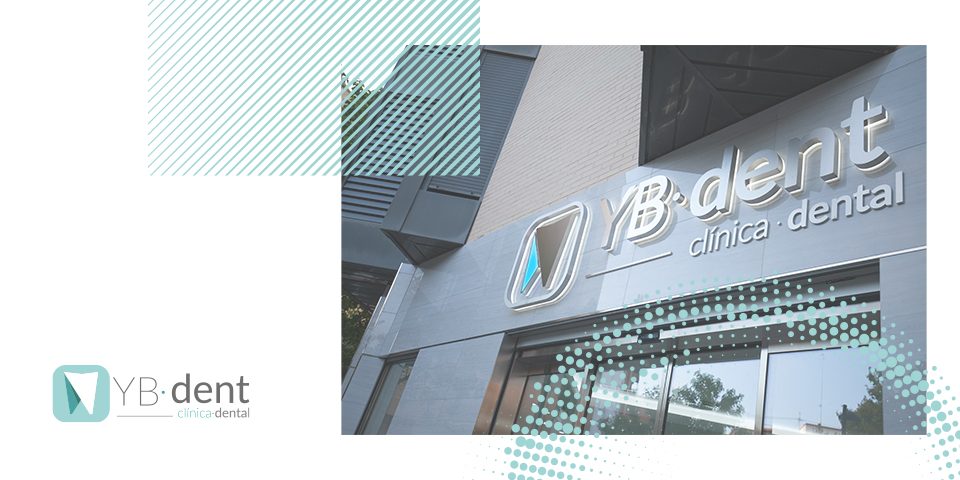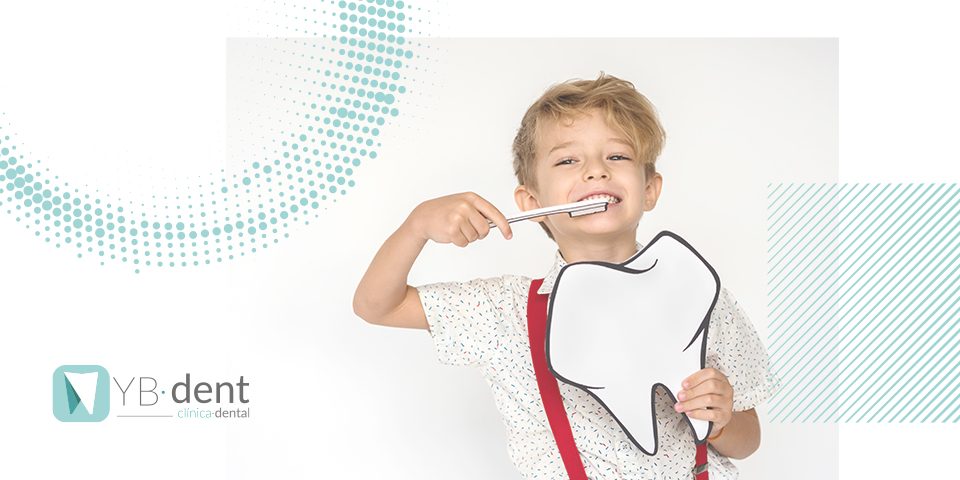Servicio de Odontopediatría en Valencia

La odontopediatría u odontología pediátrica es la rama de la salud bucal dirigida a los más pequeños de la casa. Se especializa tanto en bebés como en niños hasta llegar a la adolescencia.
Aunque pase desapercibido, este servicio es fundamental para que los niños consigan un buen desarrollo. Revisar los dientes en edades tempranas nos ayudará a evitar problemas en ese mismo momento pero también futuros; patologías en edades adultas o enfermedades complicadas de solucionar si no se perciben a tiempo.
Servicios de Odontopediatría en Valencia
Los profesionales que tratan con niños enfocan su trabajo desde un punto de vista distinto puesto que necesitan interactuar con ellos mediante procesos psicológicos afectivos y no a través del razonamiento.
En nuestra clínica dental YB-dent nos preocupamos por los pequeños de casa y nos aseguramos de que su experiencia con nuestros odontólogos pediatras sea agradable, entretenida y dinámica.
Para ello, además de contar con el mejor equipo especializado, disponemos de una sala de espera hecha para que los niños se sientan cómodos, interioricen confianza y asocien el dentista a la diversión. Esto generará un ambiente positivo que les ocasionará una posterior aceptación a la hora de realizar los tratamientos o revisiones.
¿Cuáles son los principales tratamientos que se realizan en odontopediatría?
A continuación vamos a mencionar las intervenciones bucales más comunes entre el público infantil para poder detectarlas a tiempo:
- Traumatismo y fracturas dentales. Es muy común que los niños puedan llegar a casa con un diente roto o alguna fractura causadas por el juego. En estos casos deberemos acudir al dentista con la mayor brevedad de tiempo posible ya que estaremos a contrarreloj, e introducir el diente en leche, saliva o suero.
- Caries dental. Este tipo de consultas suele incrementarse al finalizar el verano. Esto se debe a una gran ingesta de azúcares y una escasa o mala higiene bucal, algo muy común entre los más pequeños.
- Selladores de surcos y fisuras. Consiste en una práctica indolora para la prevención de caries rellenando estos surcos o fisuras que aparecen en la superficie de la dentina.
- Ortodoncia Esta praxis se coloca en niños de entre seis y once años. Se emplean dispositivos como máscaras de tracción, expansores o disyuntores para corregir patologías de posición dental, problemas de crecimiento óseo como sobre mordida, mordida cruzada o paladar estrecho y maloclusiones.
Con ello, nos podemos adelantar a futuros defectos más difíciles de corregir.
- Mantenimiento de espacios. A veces los dientes de leche pueden dejar espacios que causan una erupción en el crecimiento de los dientes definitivos. El mantenimiento de espacios nos sirve para evitar esas incorrecciones.
Consejos para disminuir y evitar problemas dentales en niños
Para evitar este tipo de problemas es muy importante educar a nuestros hijos, desde edades muy tempranas, en la higiene bucal y enseñarles unos hábitos saludables y adecuados para mantener limpios sus dientes.
Es importante que, incluso cuando aún tienen dentinas de leche, sigan una correcta higiene puesto que la salud de sus dientes permanentes tiene mucho que ver con el estado de la boca cuando son pequeños.
Para disminuir y evitar futuros problemas dentales deben:
- Acudir a revisiones periódicas.
- No consumir una elevada cantidad de azúcares.
- Evitar los azúcares antes de dormir.
- Lavarse los dientes al menos antes de acostarse.
En nuestra web podrás leer noticias complementarias sobre “Alimentos dañinos y beneficiosos para sus dientes”, “El azúcar, un gran peligro para nuestros dientes” o “¿Necesito llevar aparato?” entre otros para seguir informado sobre cómo cuidar nuestra sonrisa y salud bucal.
En YB-dent queremos que tus hijos crezcan sanos y sin molestias causadas por problemas dentales. Nos preocupamos por la odontopediatría, por ello si necesitas cualquier tipo de información no dudes en ponerte en contacto con nosotros a través de:
- Nuestro número de contacto; 961 672 098 / 696 556 977
- Nuestro mail; info@clinicadentalybdent.com
- O visitándonos en C/ Viver 25, 56 020 Valencia. Un dentista cerca, zona Benimaclet.
Nuestra atención será totalmente personalizada, no todos tenemos las mismas condiciones y lo entendemos.



